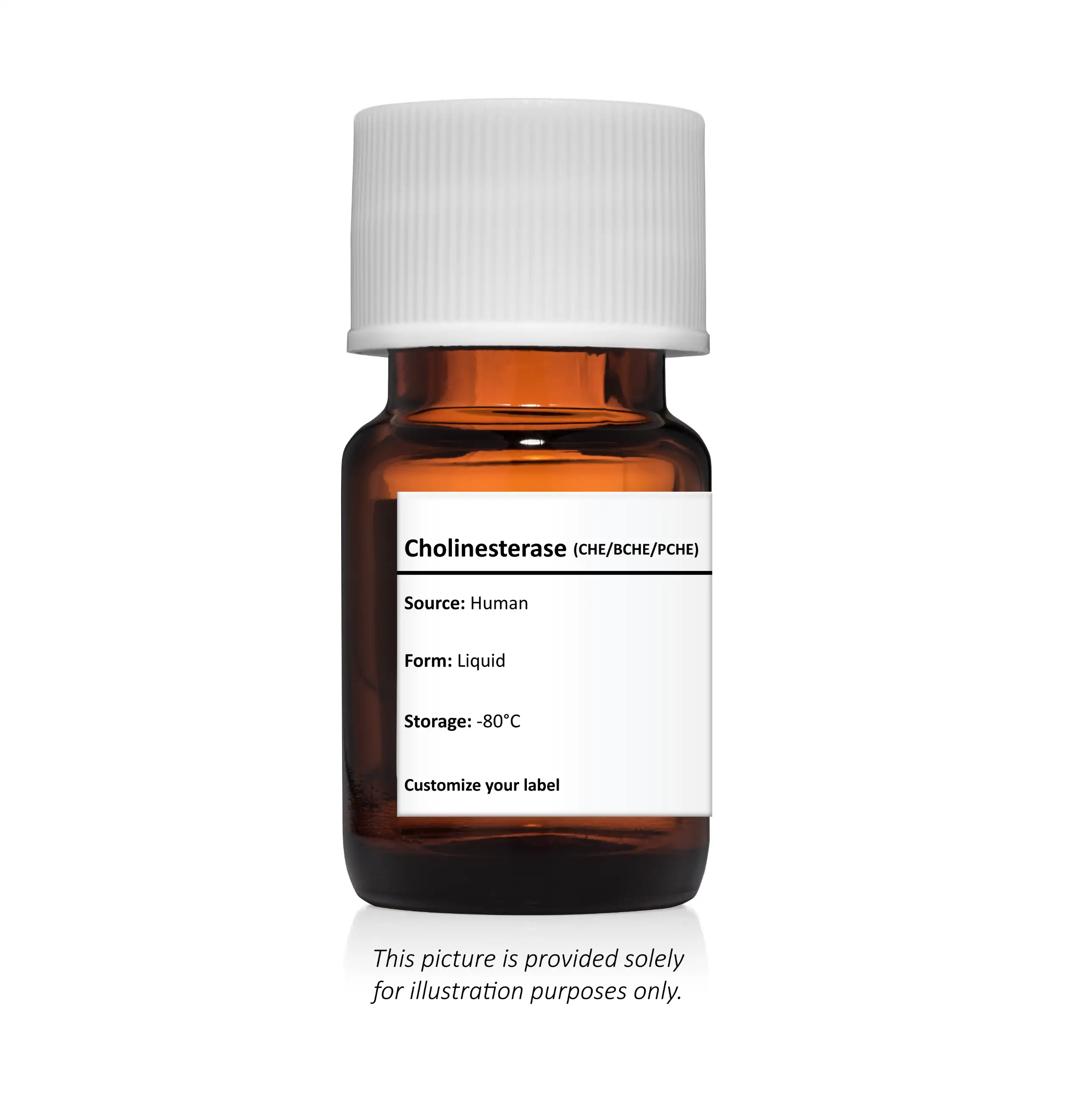Cholinesterase (CHE-BCHE-PCHE)
Cholinesterase is an enzyme that is relatively non-specific and catalyzes the hydrolysis of many different choline esters.
| Product Specifications | |
|---|---|
| Source | Human Plasma |
| Form | Liquid |
| Purity | Partially Purified |
| Storage | -80°C |

By contrast, the enzyme more often referred to as cholinesterase, more accurately known as acetylcholinesterase, is more selective for the neurotransmitter acetylcholine, and is found in nerve endings as well as in erythrocytes and other tissues. As the name implies, it is plasma cholinesterase that is primarily found in normal plasma or serum. Both types of enzyme catalyze the general reaction shown below, only the specificities differ.
The low specificity of plasma cholinesterase means it can hydrolyze a variety of substrates, and thus can act as a scavenger and general detoxification enzyme, perhaps preventing the action of substances that would otherwise poison acetylcholinesterase, the enzyme critical for neurological function. Plasma cholinesterase has many diagnostic applications. It is synthesized in the liver and thus can be an accurate reflection of liver function. Whereas other liver enzymes such as ALT and ALP are good indicators of liver tissue damage and are thus typically elevated in serum and plasma, plasma cholinesterase as an indicator of liver function is typically reduced when the liver is not functioning properly.

